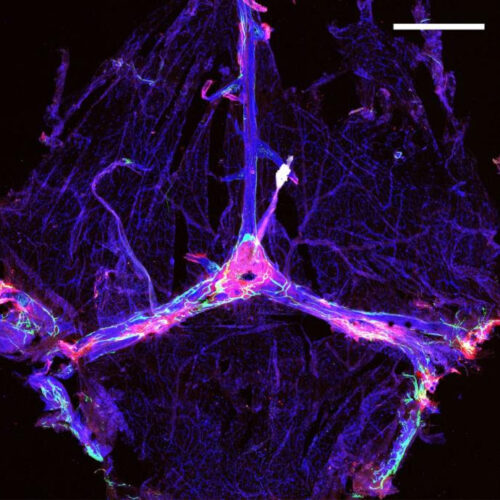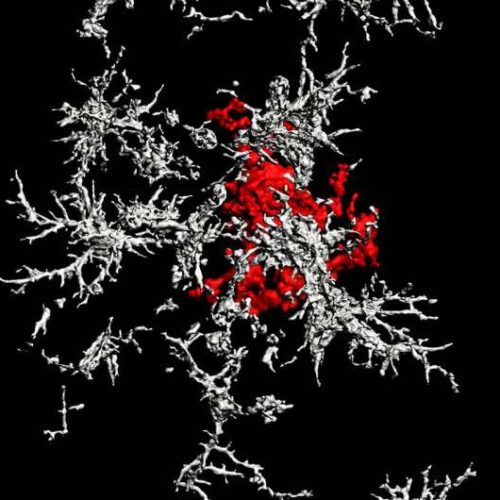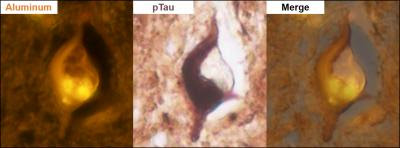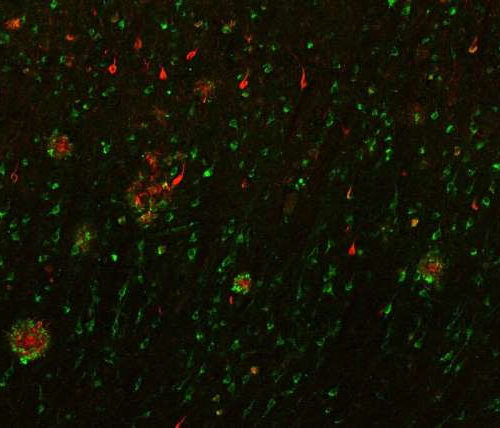April 28, 2021 11:12 AM EDT Updated 11:44 AM Discovery PureTech turns 200-year-old discovery into a new approach to Alzheimer’s, while clinging to controversial amyloid hypothesis Before MRIs or CT scans, 18th-century anatomist Paolo Mascagni injected his cadavers with mercury. Ever mobile, the mercury coursed through their veins like blood, illuminating the body’s rivers and...
Category: <span>Alzheimer’s</span>
Brain’s waste removal system may offer path to better outcomes in Alzheimer’s therapy
NIH/NATIONAL INSTITUTE ON AGING IMAGE: STUDY OF MOUSE BRAIN SHOWS THE MENINGEAL LYMPHATICS SYSTEM (PURPLE AND PINK) COULD HELP REDUCE AMYLOID. CREDIT: IMAGE COURTESY OF SANDRO DA MESQUITA. Enhancing the brain’s lymphatic system when administering immunotherapies may lead to better clinical outcomes for Alzheimer’s disease patients, according to a new study in mice. Results published...
Salk scientists reveal how brain cells in Alzheimer’s go awry, lose their identity
SALK INSTITUTE IMAGE: THIS IMAGE IS A COMPOSITE OF INDUCED NEURONS (BRAIN CELLS) FROM DIFFERENT INDIVIDUALS WITH ALZHEIMER’S DISEASE. CREDIT: SALK INSTITUTE LA JOLLA–(April 27, 2021) Despite the prevalence of Alzheimer’s, there are still no treatments, in part because it has been challenging to study how the disease develops. Now, scientists at the Salk Institute...
Experimental drug shows potential against Alzheimer’s disease
ALBERT EINSTEIN COLLEGE OF MEDICINE IMAGE: ANA MARIA CUERVO, M.D., PH.D. CREDIT: ALBERT EINSTEIN COLLEGE OF MEDICINE April 22, 2021–(BRONX, NY)–Researchers at Albert Einstein College of Medicine have designed an experimental drug that reversed key symptoms of Alzheimer’s disease in mice. The drug works by reinvigorating a cellular cleaning mechanism that gets rid of unwanted proteins by digesting...
To forget or to do not forget?
INSTITUTE OF PHYSICAL CHEMISTRY OF THE POLISH ACADEMY OF SCIENCES IMAGE: NEURONS CREATE A UNIQUE NETWORK THAT IS DAMAGED WHEN AFFECTED BY ALZHEIMER’S DISEASE. CREDIT: SOURCE: IPC PAS, GRZEGORZ KRZYZEWSKI Alzheimer’s disease (AD) is a form of progressive dementia interfering with daily living. It is caused by the decline in the number of brain cells...
In surprising twist, some Alzheimer’s plaques may be protective, not destructive
by Salk Institute A dense-core amyloid-beta plaque (red) surrounded by microglia that lack TAM receptors (white) in the brain of a mouse with Alzheimer’s disease. Credit: Salk Institute One of the characteristic hallmarks of Alzheimer’s disease (AD) is the buildup of amyloid-beta plaques in the brain. Most therapies designed to treat AD target these plaques, but...
TGen identifies gene that could help prevent or delay onset of Alzheimer’s disease
THE TRANSLATIONAL GENOMICS RESEARCH INSTITUTE PHOENIX, Ariz. — April 13, 2021 — Findings of a study by the Translational Genomics Research Institute (TGen), an affiliate of City of Hope, suggest that increasing expression of a gene known as ABCC1 could not only reduce the deposition of a hard plaque in the brain that leads to Alzheimer’s disease, but might...
Leaking calcium in neurons an early sign of Alzheimer’s pathology
Alzheimer’s disease is known for its slow attack on neurons crucial to memory and cognition. But why are these particular neurons in aging brains so susceptible to the disease’s ravages, while others remain resilient? In a new study published in the journal Alzheimer’s & Dementia, The Journal of the Alzheimer’s Association, researchers at the Yale...
Aluminum is intricately associated with the neuropathology of familial Alzheimer’s disease
IOS PRESS IMAGE: THE IMAGE SHOWS ALUMINUM (ORANGE) IN A NEURON IN A DONOR’S BRAIN TISSUE WITH FAMILIAL ALZHEIMER’S DISEASE. THE SAME NEURON REVEALED POSITIVE IMMUNOSTAINING (BROWN) FOR PHOSPHORYLATED TAU (PTAU). MERGING THESE IMAGES SHOWED THAT ALUMINIUM AND pTau ARE CO-LOCATE DIN THE SAME CELL. CREDIT: DR. MOLD Amsterdam, April 9, 2021 — This study builds upon...
PLD3 gene contributes to risk of Alzheimer’s disease
by Public Library of Science This image shows the close relationship between phospholipase D3 and the pathological hallmarks of Alzheimer’s disease in tissue from the temporal lobe of a human brain. Phospholipase D3, which is primarily in neurons, is shown in green and neuritic plaques and neurofibrillary tangles are in red stained with thiazine red. Credit:...







